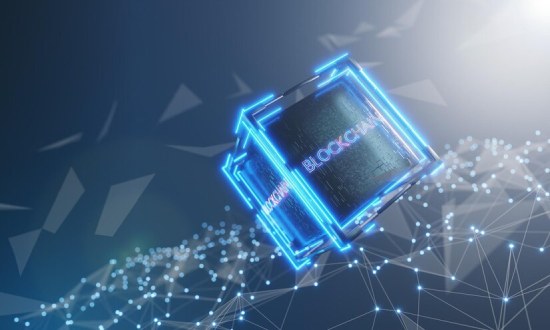-
Bitcoin, the world's first decentralized cryptocurrency, operates on a system of scarcity. With a total supply cap of 21 million coins, Bitcoin is designed to mimic precious metals like gold, providing an anti-inflationary mechanism. But what happens when all Bitcoin (BTC) are mined? This question delves into the core of Bitcoin's design and its implications for miners, investors, and businesses leveraging blockchain technology. In this article, we explore the mechanics of Bitcoin mining, the role of block rewards, and the economic impact of reaching the 21-million cap. For related to crypto, visit our crypto development services.
Understanding Bitcoin Mining and Supply Cap
Bitcoin Mining: A Brief Overview
Bitcoin mining is the process of validating transactions on the blockchain and adding them to the distributed ledger. Miners compete to solve complex mathematical problems, a process known as Proof of Work (PoW). The miner who successfully solves the puzzle is rewarded with a block reward, which consists of newly minted Bitcoin and transaction fees.
Bitcoin's 21 Million Supply Cap
Satoshi Nakamoto, Bitcoin's pseudonymous creator, embedded the 21-million BTC cap into the protocol to ensure a finite supply. This cap, achieved through a deflationary issuance schedule, is enforced by Bitcoin's halving mechanism, which reduces the block reward by 50% approximately every four years.
Also, Check | A Comprehensive Guide to the Runes Standard on Bitcoin
What Happens When All Bitcoin Are Mined?
Transition to Transaction Fee-Driven Rewards
Once all 21 million BTC have been mined (estimated around 2140), miners will no longer receive block rewards for creating new blocks. Instead, their income will solely rely on transaction fees paid by users to have their transactions processed.
Implications for Miners
Without block rewards, the profitability of mining will depend heavily on transaction volume and network fees. This raises concerns about miner incentives and the security of the network:
- Lower Incentives: Miners may reduce their participation if fees are insufficient to cover operational costs.
- Potential Centralization: Smaller miners may be forced out, leading to greater centralization among large mining operations.
- Impact on Security: A reduced number of miners could make the network more susceptible to attacks, such as the 51% attack.
Transaction Fees and Network Behavior
As block rewards diminish over time, transaction fees will play a more significant role in incentivizing miners. Businesses using the Bitcoin network must prepare for potentially higher fees, especially during periods of high transaction volume. This could make Bitcoin less attractive for micropayments but more appealing for large-value transactions.
Bitcoin as a Store of Value
The scarcity created by the 21-million cap enhances Bitcoin's role as "digital gold." With no new Bitcoin entering circulation after 2140, the focus will shift entirely to its existing supply. This scarcity is expected to maintain or increase its value, benefiting long-term investors and businesses holding Bitcoin as a reserve asset.
You might also like | Demystifying Bitcoin Ordinals : What You Need to Know
The Role of Layer 2 Solutions
To address scalability and fee concerns, Layer 2 solutions like the Lightning Network will likely play a pivotal role. These networks enable faster and cheaper transactions by settling transactions off-chain while relying on the main Bitcoin blockchain for security.
Economic and Business Implications
For Businesses
- Hedging Against Inflation: Bitcoin's fixed supply offers businesses a hedge against fiat currency devaluation.
- Payment Integration: Businesses that accept Bitcoin payments may need to account for potential fee increases post-2140.
- Investment Opportunities: Institutional adoption of Bitcoin as a store of value could accelerate, making it a valuable asset in corporate treasuries.
For the Economy
- Deflationary Pressure: Bitcoin's scarcity may lead to deflationary trends in economies where it is widely adopted.
- Regulatory Developments: Governments may increase their scrutiny and regulation of Bitcoin as its significance grows.
Also, Explore | Satoshi Nakamoto's Last Email Reveals Bitcoin Creator's Thoughts
Frequently Asked Questions (FAQs)
1. What happens to miners when all Bitcoin are mined?
Miners will no longer earn block rewards and will rely solely on transaction fees for income. This could alter the economic landscape of Bitcoin mining.
2. Will Bitcoin become useless after reaching the 21 million cap?
No. Bitcoin will continue to function as a decentralized network for value transfer and a store of value. Its fixed supply enhances its scarcity and desirability.
3. How will transaction fees impact Bitcoin's usability?
Transaction fees are expected to rise, especially during high-demand periods. Businesses and users may increasingly rely on Layer 2 solutions for cost-effective transactions.
4. Why was Bitcoin limited to 21 million coins?
The 21-million cap was designed to mimic the scarcity of precious metals like gold, creating an anti-inflationary digital asset.
5. Can the Bitcoin supply cap be increased?
Technically, yes, but it would require a consensus among network participants to alter Bitcoin's protocol. Given the decentralized nature of Bitcoin and the strong resistance to change, this is highly unlikely.
Conclusion
The endgame for Bitcoin's 21-million cap marks a pivotal shift in its ecosystem. While it presents challenges, such as reliance on transaction fees and potential centralization of mining, it also reinforces Bitcoin's role as a scarce and valuable asset. Businesses and investors must prepare for this eventuality by adopting scalable solutions, monitoring fee structures, and understanding the broader economic impact of Bitcoin's finite supply. As we inch closer to 2140, Bitcoin's legacy as a revolutionary financial innovation will continue to evolve, shaping the future of decentralized finance. If you are looking to develop levereging the potential of cryptocurrencies, connect with our skilled crypto developers to get started.

Our Offices
INDIA
Emaar Digital Greens, Sector 61,
Gurugram, Haryana
122011.
Welldone Tech Park,
Sector 48, Sohna road,
Gurugram, Haryana
122018.















